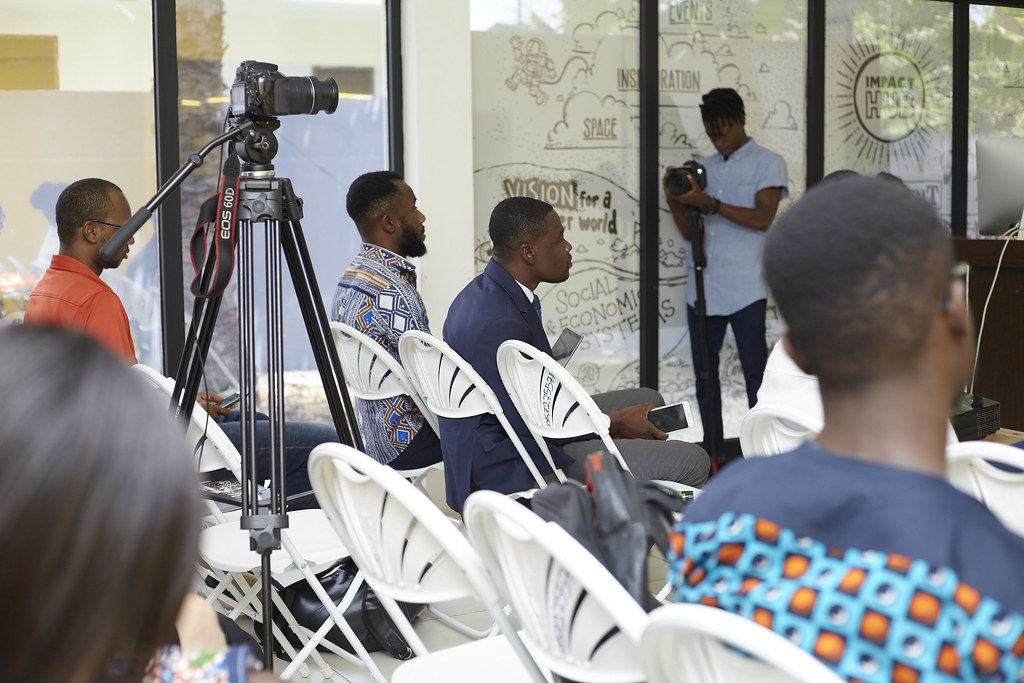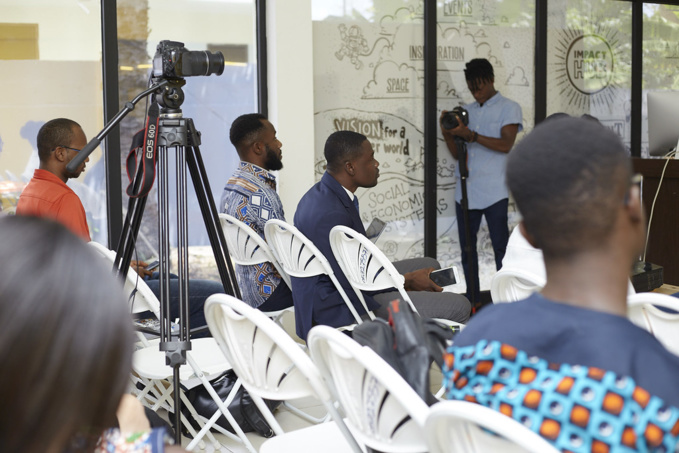1. Let people know why they need to see your presentation.
Clearly outline the purpose of the presentation before it begins. Make sure everyone understands you. Do not go straight to the point, but start by talking on abstract topics. Before getting down to business, it is important to position the audience to yourself.
2. Start the presentation with a catchy story.
From the very first minute of the presentation, people should catch on your idea and want to listen to the end. Try starting with a small and personal story. Add an element of humanity to your speech - this is how you will evoke emotions in the audience.
Example: “Once, on a beautiful summer day, I was going home and walking past a bakery. I felt the smell of baking and remembered my grandmother and my childhood twenty years ago. It was as if I was again with her in the kitchen of the village house and suddenly smiled for myself. Everybody has moments when smells accidentally evoke memories.”
Wait for the reaction of the audience, and then voice your idea. For example: “Imagine how great it would be if we could keep smells reminiscent of experienced events? Let's say Anna wants to remember her wedding day and keep this memory for many years. How to put this smell in a bottle so that it will last for the rest of your life? We want to create just smells for Anna and the rest.”
3. Do not forget about a single visual range.
People love “understandable” and recognizable pictures. Build a clear structure for your presentation and use repetitive slides. For example, if your presentation has sections, make the slides corresponding to the beginning of the sections the same. Presentation templates are invented for a reason.
4. Prefer brevity.
Be specific! You do not want your audience to die of boredom and overwork. Usually, too much specifics arise when you yourself do not fully understand your key idea and are afraid that others will not understand it either.
5. Discard numbered lists, if possible.
Numbered lists force you to read them out loud, and listeners try to do the same, but at their own pace. As a result, they no longer listen to you. Slides should support your speech, not duplicate.
6. Picture instead of words.
The worst thing you can do during a presentation is to get the audience to read the text on the slides while you say something else. Illustrations should reflect the essence of your words, evoke associations and serve as a living example.
7. Add contrasts to cheer the listeners.
The main thing is not to overdo it. In any case, slides should form a single narrative, the course of which is easy to follow. But sometimes this unity is useful to break. For example, contrasting slides. The right moment to use contrast is transition from one topic to another (from “goal” to “idea”), or a spectacular ending.
8. Let your listeners smile.
Usually the people listening to the presentation are serious and focused. Defuse the atmosphere with a joke or a pun. This way, you will create a friendly atmosphere and position the audience to yourself.
9. Circle your talk.
Finish what you started with. Go back to your story and explain how, thanks to your idea, it ended in a happy ending.
10. Remember the goal: call for action.
End your talk with a call to action. Tell what specific actions are required from your listeners. There should not be any vague wording. Do not assume or hint. Avoid phrases like "it would be great if now ..."; "Perhaps you could ...". For example, end like this: “Did you like it? Join our team, and together we will fulfill the dream!”. Or “Let's create this app and make dating on a journey a reality!”
Remember that the content of the presentation is not everything. You must grab the audience with your presentation and generate lively interest. Don’t forget to go over the presentation before you start. This is the best thing you can do to improve your public speaking skills.
Based on "Pitching Ideas. Make People Fall in Love with your Ideas" by Jeroen van Geel
Clearly outline the purpose of the presentation before it begins. Make sure everyone understands you. Do not go straight to the point, but start by talking on abstract topics. Before getting down to business, it is important to position the audience to yourself.
2. Start the presentation with a catchy story.
From the very first minute of the presentation, people should catch on your idea and want to listen to the end. Try starting with a small and personal story. Add an element of humanity to your speech - this is how you will evoke emotions in the audience.
Example: “Once, on a beautiful summer day, I was going home and walking past a bakery. I felt the smell of baking and remembered my grandmother and my childhood twenty years ago. It was as if I was again with her in the kitchen of the village house and suddenly smiled for myself. Everybody has moments when smells accidentally evoke memories.”
Wait for the reaction of the audience, and then voice your idea. For example: “Imagine how great it would be if we could keep smells reminiscent of experienced events? Let's say Anna wants to remember her wedding day and keep this memory for many years. How to put this smell in a bottle so that it will last for the rest of your life? We want to create just smells for Anna and the rest.”
3. Do not forget about a single visual range.
People love “understandable” and recognizable pictures. Build a clear structure for your presentation and use repetitive slides. For example, if your presentation has sections, make the slides corresponding to the beginning of the sections the same. Presentation templates are invented for a reason.
4. Prefer brevity.
Be specific! You do not want your audience to die of boredom and overwork. Usually, too much specifics arise when you yourself do not fully understand your key idea and are afraid that others will not understand it either.
5. Discard numbered lists, if possible.
Numbered lists force you to read them out loud, and listeners try to do the same, but at their own pace. As a result, they no longer listen to you. Slides should support your speech, not duplicate.
6. Picture instead of words.
The worst thing you can do during a presentation is to get the audience to read the text on the slides while you say something else. Illustrations should reflect the essence of your words, evoke associations and serve as a living example.
7. Add contrasts to cheer the listeners.
The main thing is not to overdo it. In any case, slides should form a single narrative, the course of which is easy to follow. But sometimes this unity is useful to break. For example, contrasting slides. The right moment to use contrast is transition from one topic to another (from “goal” to “idea”), or a spectacular ending.
8. Let your listeners smile.
Usually the people listening to the presentation are serious and focused. Defuse the atmosphere with a joke or a pun. This way, you will create a friendly atmosphere and position the audience to yourself.
9. Circle your talk.
Finish what you started with. Go back to your story and explain how, thanks to your idea, it ended in a happy ending.
10. Remember the goal: call for action.
End your talk with a call to action. Tell what specific actions are required from your listeners. There should not be any vague wording. Do not assume or hint. Avoid phrases like "it would be great if now ..."; "Perhaps you could ...". For example, end like this: “Did you like it? Join our team, and together we will fulfill the dream!”. Or “Let's create this app and make dating on a journey a reality!”
Remember that the content of the presentation is not everything. You must grab the audience with your presentation and generate lively interest. Don’t forget to go over the presentation before you start. This is the best thing you can do to improve your public speaking skills.
Based on "Pitching Ideas. Make People Fall in Love with your Ideas" by Jeroen van Geel



















